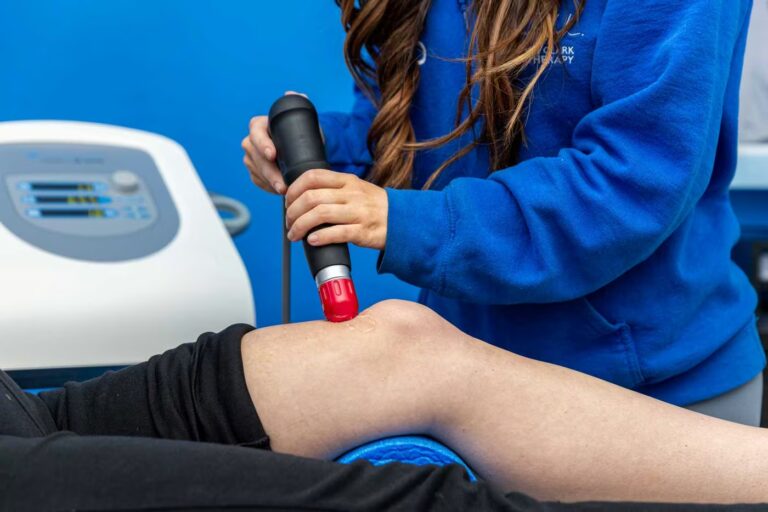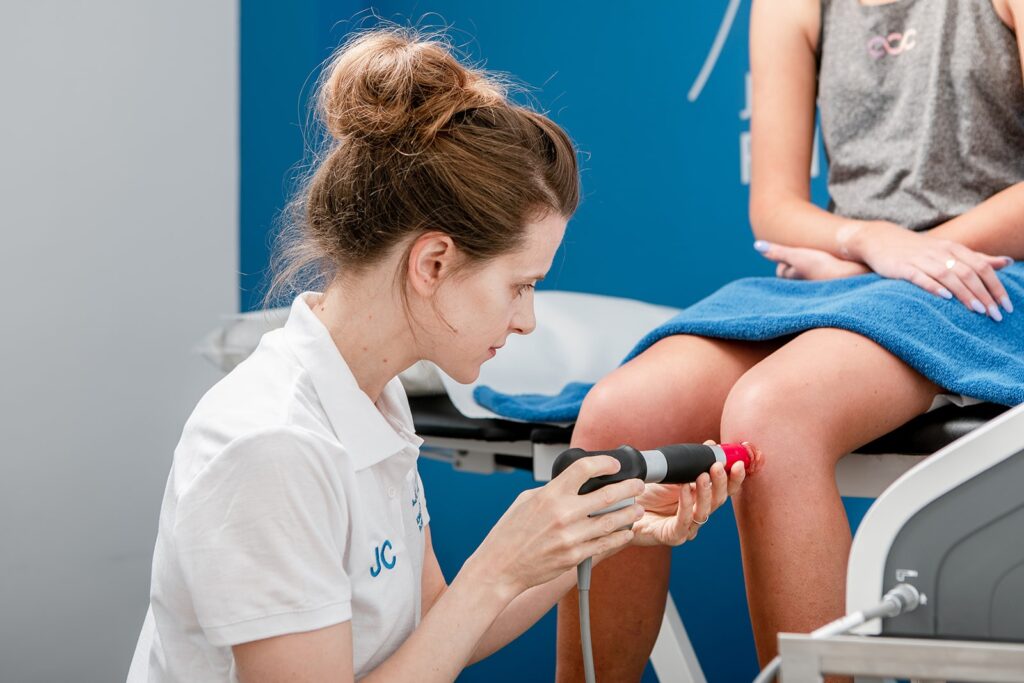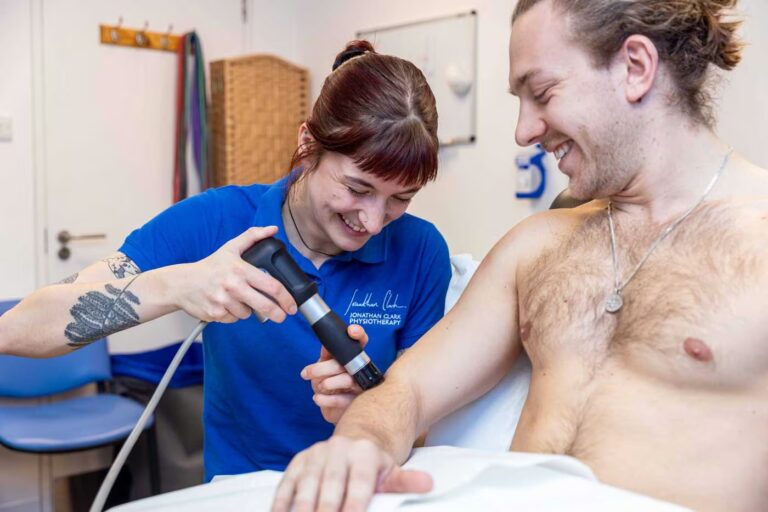
Services
Shockwave Therapy
What is Shockwave Therapy?
Shockwave therapy is a scientifically proven treatment for pain, acute and chronic soft tissue injuries.
It is a form of treatment that rapidly improves your recovery time.
A shockwave is an acoustic wave, which carries high energy into injured areas.
The acoustic waves reduce pain, increase blood flow, stimulate new blood vessel formation, reverse chronic inflammation, stimulate collagen production and dissolve calcium deposits.
How can it help me?
These processes collectively speed up the healing process of the injured area.
It can be used for the following problems
- Plantar Fasciitis
- Tendonitis
- Tendinopathy
- Bursitis
- Greater Trochanteric Pain Syndrome (GTPS)
- Shin Splints
- ITB Syndrome
- Tennis Elbow
- Golfer’s Elbow
- Muscle Strains
- Ligament Sprains
For more detailed information on the specific science and research behind how shockwave therapy works, click here.
It works by delivering shockwaves into the injured area of your body, which results in a number of key physiological benefits
- Pain reduction
- Increased blood flow
- New blood vessel formation
- Reversal of chronic inflammation
- Stimulation of collagen production
- Dissolution of calcification
These physiological processes collectively speed up the healing process of the injured area of your body.
In having Shockwave Therapy, it will allow you to quickly, and safely, return to living a pain free lifestyle.

Who Typically Benefits From Shockwave Therapy?
At Jonathan Clark Physiotherapy in Southampton, Fareham, and Midhurst, Shockwave Therapy helps people with chronic tendon pain unresponsive to rest or standard treatments.
It’s effective for conditions like plantar fasciitis, Achilles tendinopathy, jumper’s knee, tennis elbow, and calcific shoulder issues—common in athletes and active lifestyles.
This safe, non-invasive treatment speeds healing, reduces pain, and improves mobility—offering a strong alternative when other therapies haven’t worked.

What should I expect?
At your initial shockwave therapy appointment with us, we will firstly, do a full assessment to help you to understand why you’re experiencing pain and secondly, administer your first shockwave therapy treatment.
We will then design, and with your input, implement a comprehensive treatment plan specific to your problem.
This treatment plan will consist of shockwave therapy, expert advice, and exercises to do at home.
This treatment plan will gradually help you to overcome your problem and get you back to doing what you want to do.
How long will my problem take to get better?
It really depends on the condition you’re presenting with.
Plantar Fasciitis can take 6-18 months. A tendon problem, bursitis or GTPS can take 6 weeks to 12 months. Shin Splints can take 3-6 months. ITB Syndrome can take 4-8 weeks. Tennis or Golfer’s Elbow can take 3-12 months. Muscle Strains can take 2 weeks to 6 months, and Ligament Sprains can take 2 weeks to 12 months.
These timescales are with conventional Physiotherapy. When you have Shockwave Therapy, it will rapidly improve these timescales.
These recovery timescales are facilitated by our Jonathan Clark Physiotherapy recovery journey, which is made up of 8 key stepping stones.
Each stepping stone is designed to support you in understanding your body better, overcoming your problem, building your confidence, and preventing recurrence of your injury in the future.
Diagnosing your problem
Decreasing your pain and swelling
Improving your movement and flexibility
Improving your stability and control
Getting your muscles activating in the right way
Strengthening your muscles
Retraining your goal specific movements
Building resilience to prevent re-injury
A typical recovery journey through all of these stepping stones will take an average of 6 appointments over a 3-6 month timescale.
We find this number of appointments offers the best longer-term solution, allowing you to live a confident, active, and pain free life, without the risk of re-injury.

How much will it cost?
Your initial shockwave therapy appointment with us will cost £89. Each shockwave therapy follow up treatment will cost £85.
We do offer a selection of appointment packages, to help you save on the cost of your Physiotherapy with us.
Alternatively, we are recognised by all private medical insurers, so if you have private medical insurance, or a cash plan policy, you can use your allowance on your policy to access Physiotherapy with us.
How do I start my recovery journey?
To begin recovering from your problem, you can book in over the phone, by giving us a call on 02381300260.
Alternatively, you can book online, by clicking on the book now button below.
The appointment type you will need to book in for is a Shockwave Therapy Initial Appointment.
